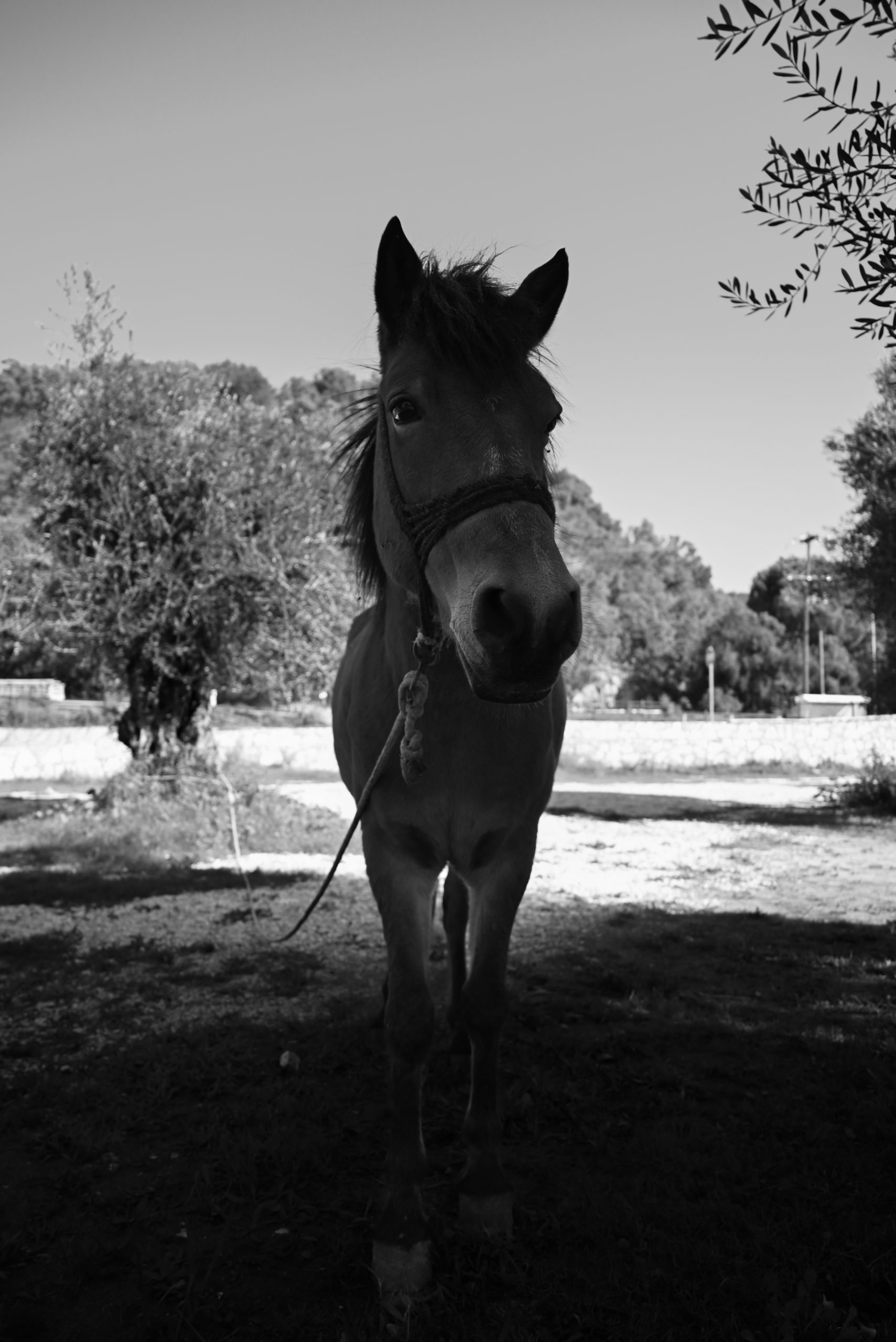
It is tempting to think of human societies as advanced, driven by many complex phenomena, and to think of non-human animals as primitive and simple. But how accurate is this common belief? Taking a deeper look into animal grouping, it is evident that many factors combine to form a successful society, equipped to survive through hardships.
It is tempting to think of human societies as advanced, driven by many complex phenomena, and to think of non-human animals as primitive and simple. But how accurate is this common belief? Taking a deeper look into animal grouping, it is evident that many factors combine to form a successful society, equipped to survive through hardships.

Photo by Sarah Laszlo

Photo by Sarah Laszlo
Scientists seem to enjoy giving animals or phenomena fitting and clever names: a group of crows is called a murder, a group of owls – a parliament, and a grouping of lions – a pride (Arapahoe Libraries, 2021). Comprised of about 2 to 40 lions, prides are lion family units that contain about 2-3 males, a dozen females, and the rest are cubs. Unlike what media and film have depicted, prides’ main hunters and leaders are the female lions, while the males defend and mark the territory (National Geographic, n.d.). The strength, number, and nature of relationships between lions are complex, with a general trend towards a larger pride when there are more resources, such as food or water available. However, animal structures are frequently formed and disbanded over time (Mbizah et al., 2020). This begs the question – how are animal societies formed?
There are two factors at play during the formation of animal societies – environmental and social (He et al., 2019). The environmental factors are often neglected in studies. Here, a series of resources, predators, and parasites present in an environment will influence how animals move or form groups. Such habitat variables can affect the frequency of social encounters between animals and thus shape their social relationships (He et al., 2019). For example, in the Leu et al. (2016) study, the researchers separated a group of wild lizards from other groups by surrounding their habitat with fences. As a result, the group developed a tighter-knit social structure, where individuals became more interconnected with each other. In addition to physical encapsulation, animals seem to group closer together when that same habitat is put through some type of disturbance. This is what Lattanzio and Miles (2014) observed when the researchers infrequently burned residential sites of male tree lizards. At the burn sites, the animals came to form geographically closer neighbour associations with one another, possibly indicating that they also developed more frequent social interactions between them.
“Animals seem to group closer together when that same habitat is put through some type of disturbance.”
Social factors, on the other hand, have received a fair bit of scientific attention. Many of us psychologists have heard of dominance (or linear) hierarchies, where high-ranking animals gain access to more resources and mating opportunities, compared to low-ranking animals in a social group. Additionally, the high-ranking, leading animals are free to exercise aggression on their subordinates, but not vice-versa. Such social order is prone to change if a subordinate manages to outwrestle a dominant leader. Thus, a social hierarchy is not necessarily set in stone and is instead unstable over long periods of time, influencing the formation of animal societies (Tibbetts et al., 2022). Moreover, humans are not the only animals who have preferences for spending time alone or being surrounded by a bustling group of friends. Studies show other species of (social) animals also possess certain personality trait differences. Interestingly, until recently, such trait differences were considered ‘noise’ when studying animal behaviour (Wolf & Weissing, 2012). Novel research has placed focus on these traits as their target constructs. It has been found that in many animals, including fish, there tend to be differences between individuals in aggressiveness, boldness, or activity (Carter et al., 2013). Importantly, just like in humans, these traits are stable over time and vary across individuals (Carter et al., 2013). Such personality differences have implications for how an animal group will be formed. For example, animals with different behavioural traits tend to group in different environments (Wolf & Weissing, 2012), facing different predators and resources. For example, groups comprised of shy individuals will be less likely to explore their environment, thus, will remain in one place for a long time. Alternatively, individuals high on sociability will be more willing to explore and take risks, presumably seeking other individuals of their species to group with (de Azevedo & Young, 2021).
Being a brain scientist by heart, I cannot help but talk about the cognitive mechanisms that underlie animal social behaviour. Research has identified brain regions that play a role in the formation of social hierarchies. At the root lies the prefrontal cortex orchestrating all other areas that contribute to social behaviour. The prefrontal cortex is an area shared by all social animals, including humans (Nelson & Guyer, 2011) and is responsible for planning and attention. Regions upstream of the prefrontal cortex inform the animal about social status, while downstream (subcortical) regions control dominant behaviour execution (Wang et al., 2014). In a related manner, research finds that group size affects grey matter density, such that living in larger groups correlates with increases in grey matter in the rostral prefrontal cortex and mid-superior temporal sulcus. This increase in grey matter is accompanied by higher coupled prefrontal and temporal activity, potentially indicating that the bigger your group, the harder your brain has to work to manage all of the complex social information (Sallet et al., 2011). Not only are both structural and functional changes induced in the brain as social hierarchy and group size are altered, but these brain changes are also quite substantial and occur at a rapid time scale soon after social changes arise (Fernald & Maruska, 2012). Considering how in chimpanzee societies, a subordinate will quickly be punished for claiming resources before the dominant individuals (Jensen et al., 2007), it is understandable that the brain has evolved fast, adaptive mechanisms to avoid such bad fortune.
“Novel work opposes this theory [of sociobiology], finding that it only fits the handful of existing social animals like wolves, chimpanzees, lions, and some insects. ”
For the readers who feel they might have discovered their dream field of work, it might be good to know it is formally named “sociobiology”. The main theory of sociobiology is that (social) behaviour has its roots in evolution, having evolved to support survival (Wilson, 2000). Even though this sounds like an appealing argument, novel work opposes this theory, finding that it only fits the handful of existing social animals like wolves, chimpanzees, lions (Tomasello, 2014), and some insects (Wheeler, 2015). Thus, the theory is only suited to these few animals, which is striking, if we are to accept that social behaviour is so critical for survival. Humans also do not make the cut and are not included in the theory. This makes sense considering that new research recognizes learning and experiences to be just as important as genes in shaping social behaviour (Ahad, 2014). Thus, social behaviour is not strictly only inherited in humans but also influenced by the environment. This dispute seems to hint at a nice research gap to be explored by future generations. Should readers be persuaded to take this challenge, it might also be good to be equipped with the right tools to study animal societies. To this end, modern science’s development of social network analysis appears to be the perfect fit. In this analysis, a social network of a group is built. In this network, each individual is represented by a ‘node’, and relationships between individuals are represented by ‘edges’. The thicker the edge, the stronger the relationship between the two animals (Abell et al., 2013). This method allows researchers to examine what relationships exist between which individual animals in a group. It can differentiate which animals are the leaders in a group by use of centrality measures, or how interconnected a group is by analyzing the network density.
To conclude, we as humans are often prone to think of ourselves as the most advanced and complex animals. However, dabbling into the scientific literature on animal societies, it becomes clear that each animal simply evolves the structure necessary for its survival. Following this reasoning, it is logical that humans are not the only beings with complex social networks, personality traits, and intriguing brain circuits that underlie these phenomena. Living in societies is recognized by many species as beneficial to survival. Nevertheless, as humans, we have the advantage of not only participating in these structures but also possessing tools to study them. This has allowed us to uncover fascinating discoveries about the workings of animal groupings and the social brain.
References
– Abell, J., Kirzinger, M. W., Gordon, Y., Kirk, J., Kokeŝ, R., Lynas, K., … & Youldon, D. (2013). A social network analysis of social cohesion in a constructed pride: implications for ex situ reintroduction of the African lion (Panthera leo). PloS one, 8(12), e82541. https://doi.org/10.1371/journal.pone.0082541
– Ahad, M. A. (2014). Sociobiology is not a theory of evolution but a branch of entomology, which deals with social insects. Academic Journal of Psychological Studies, 3(7), 380-393.
– Arapahoe Libraries. (2021, October 12). Names for Groups of Animals. https://arapahoelibraries.org/blogs/post/names-for-groups-of-animals/
– de Azevedo, C. S., & Young, R. J. (2021). Animal personality and conservation: Basics for inspiring new research. Animals, 11(4), 1019. https://doi.org/10.3390/ani11041019
– Carter, A. J., Feeney, W. E., Marshall, H. H., Cowlishaw, G., & Heinsohn, R. (2013). Animal personality: what are behavioural ecologists measuring?. Biological Reviews, 88(2), 465-475. https://doi.org/10.1111/brv.12007
– Fernald, R. D., & Maruska, K. P. (2012). Social information changes the brain. Proceedings of the National Academy of Sciences, 109(supplement_2), 17194-17199. https://doi.org/10.1073/pnas.1202552109
– Gangopadhyay, P., Chawla, M., Dal Monte, O., & Chang, S. W. (2021). Prefrontal–amygdala circuits in social decision-making. Nature neuroscience, 24(1), 5-18. https://doi.org/10.1038/s41593-020-00738-9
– He, P., Maldonado-Chaparro, A. A., & Farine, D. R. (2019). The role of habitat configuration in shaping social structure: a gap in studies of animal social complexity. Behavioral Ecology and Sociobiology, 73(1), 1-14. https://doi.org/10.1007/s00265-018-2602-7
– Jensen, K., Call, J., & Tomasello, M. (2007). Chimpanzees are vengeful but not spiteful. Proceedings of the National Academy of Sciences, 104(32), 13046-13050. https://doi.org/10.1073/pnas.0705555104
– Lattanzio, M. S., & Miles, D. B. (2014). Ecological divergence among colour morphs mediated by changes in spatial network structure associated with disturbance. Journal of Animal Ecology, 83(6), 1490-1500. https://doi.org/10.1111/1365-2656.12252
– Leu, S. T., Farine, D. R., Wey, T. W., Sih, A., & Bull, C. M. (2016). Environment modulates population social structure: experimental evidence from replicated social networks of wild lizards. Animal behaviour, 111, 23-31. https://doi.org/10.1016/j.anbehav.2015.10.001
– Mbizah, M. M., Farine, D. R., Valeix, M., Hunt, J. E., Macdonald, D. W., & Loveridge, A. J. (2020). Effect of ecological factors on fine‐scale patterns of social structure in African lions. Journal of Animal Ecology, 89(11), 2665-2676. https://doi.org/10.1111/1365-2656.13334
– National Geographic. (n.d.). African lion. https://www.nationalgeographic.com/animals/mammals/facts/african-lion
– Nelson, E. E., & Guyer, A. E. (2011). The development of the ventral prefrontal cortex and social flexibility. Developmental cognitive neuroscience, 1(3), 233-245. https://doi.org/10.1016/j.dcn.2011.01.002
– Sallet, J., Mars, R. B., Noonan, M. P., Andersson, J. L., O’reilly, J. X., Jbabdi, S., … & Rushworth, M. F. (2011). Social network size affects neural circuits in macaques. Science, 334(6056), 697-700. https://doi.org/10.1126/science.1210027
– Silva, B. A., Mattucci, C., Krzywkowski, P., Murana, E., Illarionova, A., Grinevich, V., … & Gross, C. T. (2013). Independent hypothalamic circuits for social and predator fear. Nature neuroscience, 16(12), 1731-1733. https://doi.org/10.1038/nn.3573
– Tibbetts, E. A., Pardo-Sanchez, J., & Weise, C. (2022). The establishment and maintenance of dominance hierarchies. Philosophical Transactions of the Royal Society B, 377(1845), 20200450. https://doi.org/10.1098/rstb.2020.0450
– Tomasello, M. (2014). The ultra‐social animal. European journal of social psychology, 44(3), 187-194. https://doi.org/10.1002/ejsp.2015
– Wang, F., Kessels, H. W., & Hu, H. (2014). The mouse that roared: neural mechanisms of social hierarchy. Trends in neurosciences, 37(11), 674-682. https://doi.org/10.1016/j.tins.2014.07.005
– Wheeler, W. M. (2015). The social insects: their origin and evolution. Routledge. https://doi.org/10.4324/9781315624860
– Wilson, E. O. (2000). Sociobiology: The new synthesis. Harvard University Press.
– Wolf, M., & Weissing, F. J. (2012). Animal personalities: consequences for ecology and evolution. Trends in ecology & evolution, 27(8), 452-461. https://doi.org/10.1016/j.tree.2012.05.001
Scientists seem to enjoy giving animals or phenomena fitting and clever names: a group of crows is called a murder, a group of owls – a parliament, and a grouping of lions – a pride (Arapahoe Libraries, 2021). Comprised of about 2 to 40 lions, prides are lion family units that contain about 2-3 males, a dozen females, and the rest are cubs. Unlike what media and film have depicted, prides’ main hunters and leaders are the female lions, while the males defend and mark the territory (National Geographic, n.d.). The strength, number, and nature of relationships between lions are complex, with a general trend towards a larger pride when there are more resources, such as food or water available. However, animal structures are frequently formed and disbanded over time (Mbizah et al., 2020). This begs the question – how are animal societies formed?
There are two factors at play during the formation of animal societies – environmental and social (He et al., 2019). The environmental factors are often neglected in studies. Here, a series of resources, predators, and parasites present in an environment will influence how animals move or form groups. Such habitat variables can affect the frequency of social encounters between animals and thus shape their social relationships (He et al., 2019). For example, in the Leu et al. (2016) study, the researchers separated a group of wild lizards from other groups by surrounding their habitat with fences. As a result, the group developed a tighter-knit social structure, where individuals became more interconnected with each other. In addition to physical encapsulation, animals seem to group closer together when that same habitat is put through some type of disturbance. This is what Lattanzio and Miles (2014) observed when the researchers infrequently burned residential sites of male tree lizards. At the burn sites, the animals came to form geographically closer neighbour associations with one another, possibly indicating that they also developed more frequent social interactions between them.
“Animals seem to group closer together when that same habitat is put through some type of disturbance.”
Social factors, on the other hand, have received a fair bit of scientific attention. Many of us psychologists have heard of dominance (or linear) hierarchies, where high-ranking animals gain access to more resources and mating opportunities, compared to low-ranking animals in a social group. Additionally, the high-ranking, leading animals are free to exercise aggression on their subordinates, but not vice-versa. Such social order is prone to change if a subordinate manages to outwrestle a dominant leader. Thus, a social hierarchy is not necessarily set in stone and is instead unstable over long periods of time, influencing the formation of animal societies (Tibbetts et al., 2022). Moreover, humans are not the only animals who have preferences for spending time alone or being surrounded by a bustling group of friends. Studies show other species of (social) animals also possess certain personality trait differences. Interestingly, until recently, such trait differences were considered ‘noise’ when studying animal behaviour (Wolf & Weissing, 2012). Novel research has placed focus on these traits as their target constructs. It has been found that in many animals, including fish, there tend to be differences between individuals in aggressiveness, boldness, or activity (Carter et al., 2013). Importantly, just like in humans, these traits are stable over time and vary across individuals (Carter et al., 2013). Such personality differences have implications for how an animal group will be formed. For example, animals with different behavioural traits tend to group in different environments (Wolf & Weissing, 2012), facing different predators and resources. For example, groups comprised of shy individuals will be less likely to explore their environment, thus, will remain in one place for a long time. Alternatively, individuals high on sociability will be more willing to explore and take risks, presumably seeking other individuals of their species to group with (de Azevedo & Young, 2021).
Being a brain scientist by heart, I cannot help but talk about the cognitive mechanisms that underlie animal social behaviour. Research has identified brain regions that play a role in the formation of social hierarchies. At the root lies the prefrontal cortex orchestrating all other areas that contribute to social behaviour. The prefrontal cortex is an area shared by all social animals, including humans (Nelson & Guyer, 2011) and is responsible for planning and attention. Regions upstream of the prefrontal cortex inform the animal about social status, while downstream (subcortical) regions control dominant behaviour execution (Wang et al., 2014). In a related manner, research finds that group size affects grey matter density, such that living in larger groups correlates with increases in grey matter in the rostral prefrontal cortex and mid-superior temporal sulcus. This increase in grey matter is accompanied by higher coupled prefrontal and temporal activity, potentially indicating that the bigger your group, the harder your brain has to work to manage all of the complex social information (Sallet et al., 2011). Not only are both structural and functional changes induced in the brain as social hierarchy and group size are altered, but these brain changes are also quite substantial and occur at a rapid time scale soon after social changes arise (Fernald & Maruska, 2012). Considering how in chimpanzee societies, a subordinate will quickly be punished for claiming resources before the dominant individuals (Jensen et al., 2007), it is understandable that the brain has evolved fast, adaptive mechanisms to avoid such bad fortune.
“Novel work opposes this theory [of sociobiology], finding that it only fits the handful of existing social animals like wolves, chimpanzees, lions, and some insects. ”
For the readers who feel they might have discovered their dream field of work, it might be good to know it is formally named “sociobiology”. The main theory of sociobiology is that (social) behaviour has its roots in evolution, having evolved to support survival (Wilson, 2000). Even though this sounds like an appealing argument, novel work opposes this theory, finding that it only fits the handful of existing social animals like wolves, chimpanzees, lions (Tomasello, 2014), and some insects (Wheeler, 2015). Thus, the theory is only suited to these few animals, which is striking, if we are to accept that social behaviour is so critical for survival. Humans also do not make the cut and are not included in the theory. This makes sense considering that new research recognizes learning and experiences to be just as important as genes in shaping social behaviour (Ahad, 2014). Thus, social behaviour is not strictly only inherited in humans but also influenced by the environment. This dispute seems to hint at a nice research gap to be explored by future generations. Should readers be persuaded to take this challenge, it might also be good to be equipped with the right tools to study animal societies. To this end, modern science’s development of social network analysis appears to be the perfect fit. In this analysis, a social network of a group is built. In this network, each individual is represented by a ‘node’, and relationships between individuals are represented by ‘edges’. The thicker the edge, the stronger the relationship between the two animals (Abell et al., 2013). This method allows researchers to examine what relationships exist between which individual animals in a group. It can differentiate which animals are the leaders in a group by use of centrality measures, or how interconnected a group is by analyzing the network density.
To conclude, we as humans are often prone to think of ourselves as the most advanced and complex animals. However, dabbling into the scientific literature on animal societies, it becomes clear that each animal simply evolves the structure necessary for its survival. Following this reasoning, it is logical that humans are not the only beings with complex social networks, personality traits, and intriguing brain circuits that underlie these phenomena. Living in societies is recognized by many species as beneficial to survival. Nevertheless, as humans, we have the advantage of not only participating in these structures but also possessing tools to study them. This has allowed us to uncover fascinating discoveries about the workings of animal groupings and the social brain.



